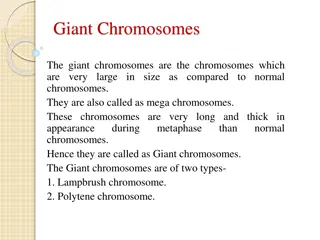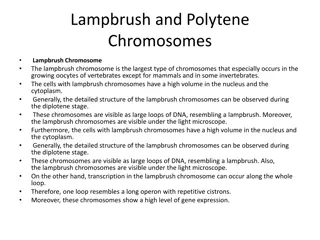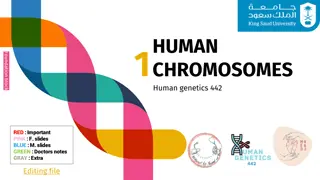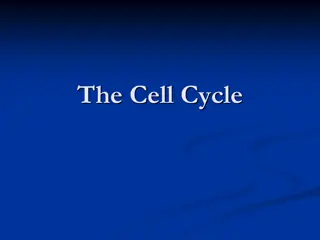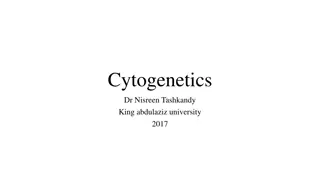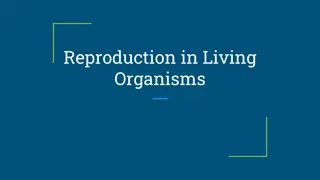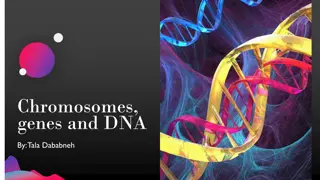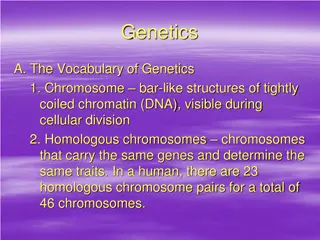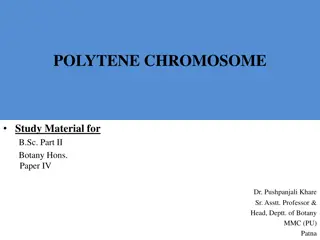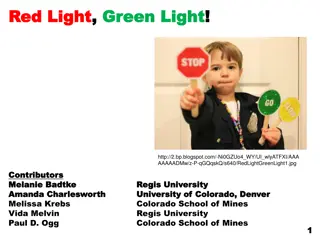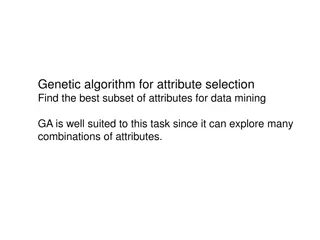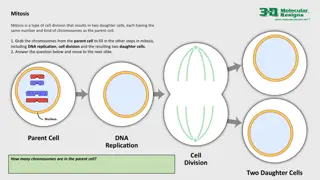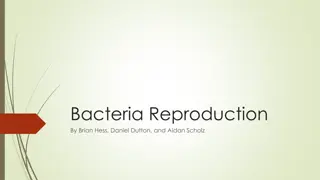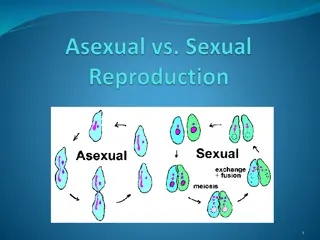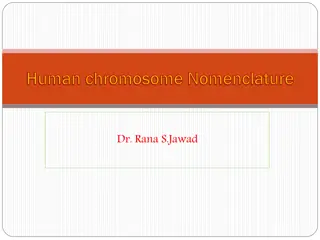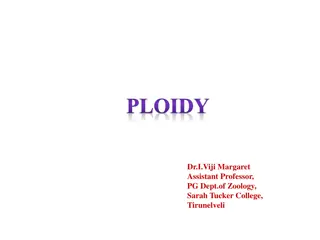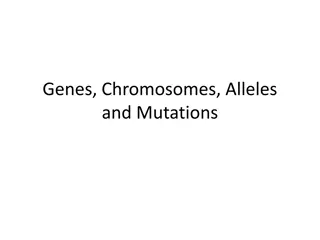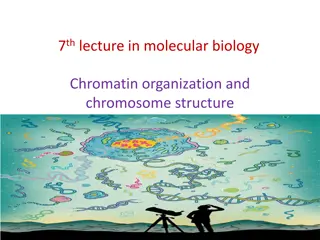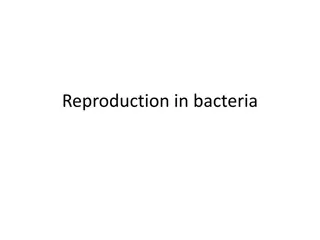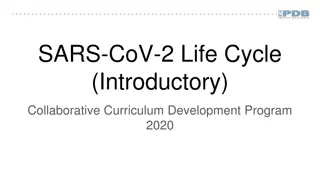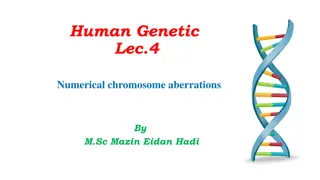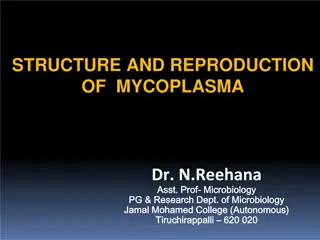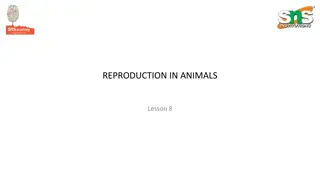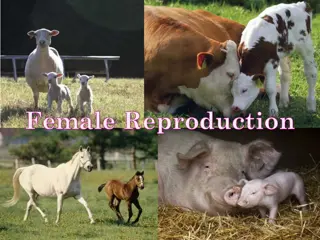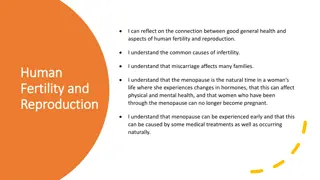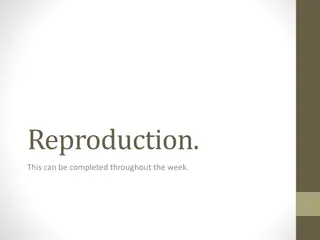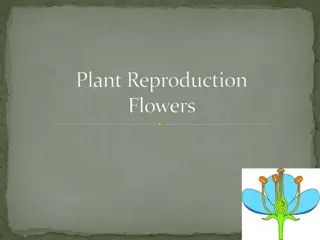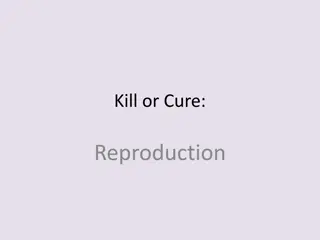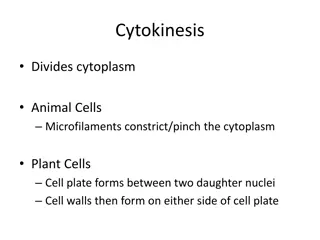Understanding Cell Reproduction: Chromosomes, Cell Cycle, and Division
Explore the fascinating world of cell reproduction, from the structure of chromosomes and the role of histones to the process of mitosis and meiosis. Learn about diploid and haploid cells, the significance of homologous chromosomes, and the stages of the cell cycle. Discover how different types of cells in the human body contribute to the formation of new offspring through the division process.
Download Presentation

Please find below an Image/Link to download the presentation.
The content on the website is provided AS IS for your information and personal use only. It may not be sold, licensed, or shared on other websites without obtaining consent from the author. Download presentation by click this link. If you encounter any issues during the download, it is possible that the publisher has removed the file from their server.
E N D
Presentation Transcript
CHAPTER 8 CELL REPRODUCTION
READ TOP OF PG. 145 IN TEXTBOOK Chromosome single super coiled DNA molecule with its associated proteins (histones and non-histones). -Histones - help maintain the shape of the chromosome. -Non-histones help control the activity of specific regions of DNA. NOTE: a cell only coils its DNA into chromosomes when it is about to divide .normally chromosomes are uncoiled to form Chromatin. Chromosome from a dividing cell: has doubled itself so that when the cell divides, each new cell will get a copy ..
Chromatids the name for each copy of the doubled chromosome. Centromere holds the chromatids together until they separate when the cell divides. See figure 8-2 on page 146. Each species has its own characteristic number of chromosomes. See table 8-1 on pg. 146. Sex Chromosomes (X and Y in humans) determine the sex of an organism. - Females = XX Males = XY
Autosomes all of the chromosomes in an organism except the sex chromosomes (X,Y). In Humans 2 sex chromosomes + 44 autosomes for a total of 46 OR 23 Homologous pairs . Homologous Chromosomes 2 copies of each autosome (a copy from each parent) .they are the same size and shape, and carry genes for the same traits such as eye color or hair color, etc. Karyotype Photograph of chromsomes from white blood cells - used to examine someone s chromosomes. See figure 8-3 on pg.147.
Diploid Cells (2n) have both chromosomes for each homologous pair (1 from mom and 1 from dad). All cells in the human body are diploid except sperm and egg. Haploid Cells (1n) have only 1 set of chromosomes, or the number present in diploid cells. In humans, the only cells that are haploid are sperm and egg. Sperm (1n) + Egg (1n) = Offspring (2n) In this chapter, we will study 2 processes (Mitosis and Meiosis) that produce new diploid and haploid cells.
THE CELL CYCLE REPEATING SET OF EVENTS THAT MAKE UP THE LIFE CYCLE OF A CELL. (INCLUDE S MITOSIS) SEE FIG. 8-5 PG. 149 Steps of the cell cycle: 1. Interphase = time between cell divisions .cells spend most of their life in this phase. - G1 Phase (can be hours, weeks, months) newly divided cells grow to full size time gap from 1 division until the cell begins to prepare for the next division. - S Phase DNA synthesis..cell is getting ready to enter mitosis by copying its DNA. - G2 Phase growth and preparation for cell division cell organelles are being copied. - G0 Phase some cells exit the cell cycle here and go into the G0 phase = cell no longer divides Ex. Nerve cells.
Prokaryotic cell division = binary fission or simple cell division. There are no distinct phases like in eukaryotic cell division. Eukaryotic cell division 2 types: 1. Mitosis results in new cells with a chromosome number identical to the original cell. 2. Meiosis reduces the number of chromosomes by in the offspring cells Haploid cells (sperm/egg).
2. Mitosis = M Phase = Division of the nucleus. See fig. 8-6 on pg. 150 . a. Prophase Doubled DNA coils into chromosomes, therefore, there are 2 copies of each chromosome = 2 chromatids attached by the centromere. Nuclear membrane breaks down. Centrosomes (dark spots) appear and move toward opposite poles of the cell they form the anchors for the Mitotic Spindle. Spindle Fibers radiate from the centrosomes and attach to the doubled chromosomes. b. Metaphase spindle fibers line chromosomes up in the middle of the cell.
c. Anaphase Chromatids of each doubled chromosome separate at the centromere and move toward opposite poles of the cell. NOTE The former chromatids are now considered full fledged chromosomes!!!!!! d. Telophase chromosomes reach opposite poles of the cell. Spindle fibers disassemble. Chromosomes uncoil to form chromatin. Nuclear membrane reforms around each new set of chromosomes and Cytokinesis occurs. Cytokinesis = division of the cytoplasm. 2 ways this occurs in plant vs. animal cells: 1. Cleavage Furrow (animal cells) cell membrane pinches inward and cuts the cell in half (looks like a belt tightening around cell). 2. Cell Plate (plant cells) a wall (cell plate) is built at the midline of the cell and it extends to cut cell in half. See figs. 8-7 and 8-8 on pg. 151.
MEIOSIS Meiosis process of cell division that produces Haploid (1n) reproductive cells called Gametes (sperm and egg). Chromosome number is cut in half so that when fertilization takes place, the fusion will result in a cell that is diploid (2n). Meiotic cells undergo G1, S, and G2 of Interphase just like in Mitosis. The Difference: When a cell enters Meiosis, its chromosomes are doubled. It will divide TWICE (Meiosis I and Meiosis II). The result will be FOUR HAPLOID (1n) REPRODUCTIVE CELLS.
STUDY PICTURES ON PGS. 154 AND 155 Meiosis I: a. Prophase I DNA coils into chromosomes. Spindle fibers appear. Nuclear membrane breaks down. Synapsis occurs homologous chromosomes line up together LENGTHWISE. Tetrad = each pair of homologous chromosomes ( tetra means 4) .because there are 4 chromatids in each pair. Chromosomes line up lengthwise gene for gene. Crossing Over sometimes occurs at this point (see fig. 8-10 on pg. 154). This results in a mixing of genes = more variety.
b. Metaphase I Tetrads line randomly along the midline of the cell. Spindle fiber attach to homologues. Law of Independent Assortment mother and father chromosomes line up randomly. When they later separate, the offspring cells will get a mix of mom and dad genes. This is why children in a family can look very different from one another. c. Anaphase I each homologous chromosome moves to opposite poles of the dividing cell. d. Telophase I = final phase of Meiosis I. Homologous chromosomes reach opposite poles. Cytokinesis I begins. Remember each chromosome is still doubled at this point.
Meiosis II occurs in each of the 2 cells formed in meiosis I. It is not preceded by the copying of any DNA. a. Prophase II Spindle fibers form and attach to the doubled chromosomes. b. Metaphase II chromsomes line up on the midline. c. Anaphase II Chromatids (from the doubled chromosome) separate and move toward opposite poles. d. Telophase II nuclear membrane reforms in each of the 4 newly forming cells. Cytokinesis II occurs - This results in 4 new Haploid (1n) cells and each chromosome is now single.
Gametes = haploid (1n) reproductive cells = sperm and egg. Somatic Cells = diploid (2n) body cells = all of body s cells except sperm and egg. Meiosis only occurs in the reproductive organs (testes and ovaries). Spermatogenesis and Oogenesis see fig. 8-12 on pg. 155. Asexual Reproduction production of offspring from 1 parent only ..creates no genetic variety. Sexual Reproduction production of offspring from 2 parents .creates a significant amount of variety in offspring. Remember Variety is the spice of Life !!


